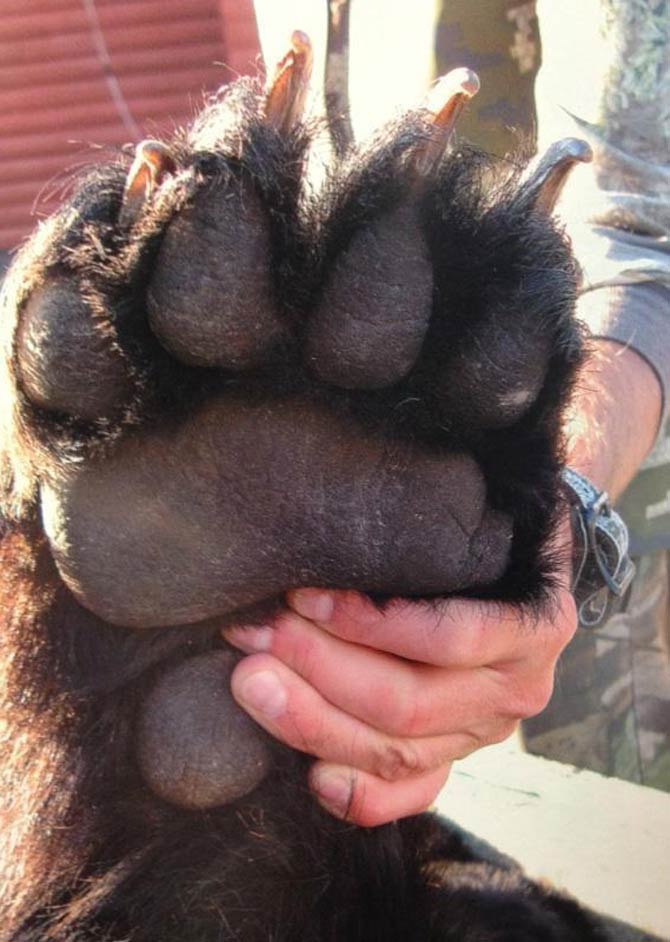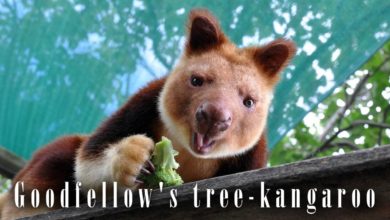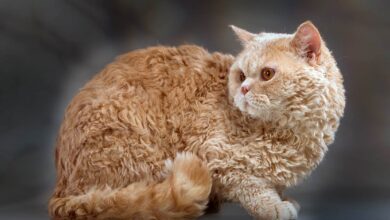Brown bear (Ursus arctos)
The brown bear is the largest predator on land next to the white (polar) bear. Even the Siberian tiger doesn’t get in his way… As one of the largest land-based predators on earth, it plays an important role in numerous myths and legends. It was decimated or exterminated in many places as a food competitor and a threat to humans. So there are only relic populations in Western and Central Europe. Brown bears, unlike their white cousins (who eat only meat and carrion), are omnivores.
The most powerful predators
Currently, brown bears are considered the most powerful land predators. However, few people know that the first bears that appeared on our planet millions of years ago were the size of… small dogs.
Occurrence
Brown bears live in hard-to-reach forests almost all over the globe, they can also be found in the tundra. It occurs in several subspecies in Eurasia and North America, including European brown bear, grizzly bear and Kodiak bear.

Characteristics
Brown bears have the sturdy, powerful build of all bears, but their skeleton is generally stronger than that of other members of their family. A species-specific characteristic is the muscular hump over the shoulders, which gives the front legs additional strength.
Like all bears, brown bears have a heavy, massive head with a protruding snout. In contrast to the often similarly colored American black bear, the forehead is significantly higher and the snout is arched inwards. Ears are protruding and rounded, but the eyes are very small. Accordingly, the sight is underdeveloped, the sense of hearing is average, the sense of smell, however, very good. The cervical vertebrae are very rotatable, but the neck is shorter than that of the closely related polar bear.
Bear body structure
These animals are powerfully built. They have extremely strongly muscled paws, ending with long, strong claws. They also have well-developed senses of smell and hearing. For this reason, they have no natural enemies other than humans.

Lifestyle
The activity time of the brown bear depends on the environmental conditions, the season or the proximity of people. They are considered to be predominantly twilight or nocturnal, especially in populated areas. At the time of the greatest need for food, in spring and autumn, they are also looking for food during the day, in summer, however, mainly at night.
Bears are sole walkers and move in the pass, which means that both legs on one side of the body are moved at the same time. Their movements are usually slow, but when required they can run very quickly and reach speeds of 50 kilometers per hour. Bears can also swim very well. While young animals often climb trees, this is usually no longer possible for adult animals due to their weight.
Social behavior and communication
Brown bears usually live solitary. During the mating season from April to August there are short-term connections, the males want to prevent the females from reproducing with other animals. The only lasting bond is that of the mother with her offspring. Brown bears show no pronounced territorial behavior, the areas can overlap, and they also do not defend their territory against other species.

Food and traveling
Bears are constantly roaming their territory in search of food. They mainly eat fruits, berries, mushrooms and various seeds. Although plants are their main food, brown bears do not despise carrion. They sometimes hunt, but fresh meat is not their favorite food. Some species, such as the North American grizzlies, catch fish, mainly salmon, which are their delicacy.
Brown bears are omnivores, but they usually eat primarily plant food. Grasses, herbs, shoots, flowers, roots, tubers, nuts and mushrooms are on the menu. In summer and autumn berries are important parts of their food. Honey is also eaten.
The meat they eat includes insects and their larvae, birds and their eggs, as well as rodents such as ground squirrels, lemmings, pocket rats and voles. With the help of their claws, they dig this prey from their burrows. In the Rocky Mountains in particular, they also eat larger mammals such as elk, reindeer, wapitis, bison, white-tailed deer and pronghorn. Of these animals, however, hardly any healthy adult animals fall victim to them, mostly they kill and eat sick or old specimens as well as young animals. The carrion of these animals is also consumed, especially specimens that died in winter after the hibernation of the bears. Rarely do they attack black bears or own cousins.
Brown bears are not specialized hunters of larger mammals, but they do have considerable powers. Hoofed animals are mostly killed by swipes on the head or neck, which is why the skull or spine of the prey is often broken.

Winter sleep (hibernation)
In late fall, brown bears prepare for hibernation. They choose a hideout in a natural hollow, a cave, or dig a burrow under the roots of trees or in a thick forest. Since they cannot find enough food during the winter months, they go into a winter rest . This hibernation is not a real hibernation because they are relatively easy to wake up.
Although the heartbeat and respiratory rate decrease significantly, the body temperature only drops slightly – from normally 36.5 to 38.5 ° C, it only drops by 4 to 5 ° C. During this time, they do not eat, drink, urinate or defecate. The start and duration of hibernation depend on the environmental conditions. Usually it begins between October and December and ends between March and May. In the southern parts of its range, however, they have no or only a shortened winter rest.
Bears avoid people
Contrary to the general perception of their aggressiveness, brown bears avoid humans. Attacks on humans are extremely rare and are usually caused by the careless behavior of homo sapiens. Unfortunately, over the last few hundred years, man has reduced the population of these good-looking animals in vast areas.

The largest brown bear
Kodiak (Ursus arctos middendorffi)
The largest brown bear is the North American Kodiak (Ursus arctos middendorffi). The weight of this bear reaches 800 kg (1764 lb), and when it stands upright on its hind legs, it is over 3 meters (10 ft) tall. Large males of Kodiak bears reach 150 cm (5 ft) in height at the withers.
The largest Kodiak whose data has been verified lived in a zoo in Dakota (USA). At the time of his death, Clyde (that was his name) weighed 966.9 kg (2,130 lb), and his fat layer was about 23 cm (9 in) thick. According to the director of this garden, Clyde probably weighed 1090 kg (2,400 lb) the year before.
The bear named Teddy, from the movie Grizzly, stood 3.4 metres (11 ft) tall on hind legs and was the largest bear in captivity.
Kamchatka brown bear (Ursus arctos beringianus)
The second largest brown bear is the Kamchatka brown bear (Ursus arctos beringianus) – in practice, it is only second in size to the Kodiak. The largest specimens exceed the weight of 650 kg (1,430 lb) and reach up to 3 meters (9.8 ft) in length standing on two legs. It is the largest bear subspecies in Eurasia. The longest skull of male was 43.6 cm (17.2 in).

Bear – interesting facts
The first animals that scientists recognized as bears appeared on our planet twenty million years ago and were the size of… small dogs.
- The largest bear is the North American Kodiak. The weight of this bear reaches 800 kg (1764 lb), and when it stands upright on its hind legs, it measures over 3 m (10 ft).
- Brown bears can be found even in high mountains, at altitudes up to 4,000 m (13,123 ft) above sea level.
- Bears are extremely agile. They run, swim and climb trees fast.
- Young bears stay with their mother for up to three years.



















